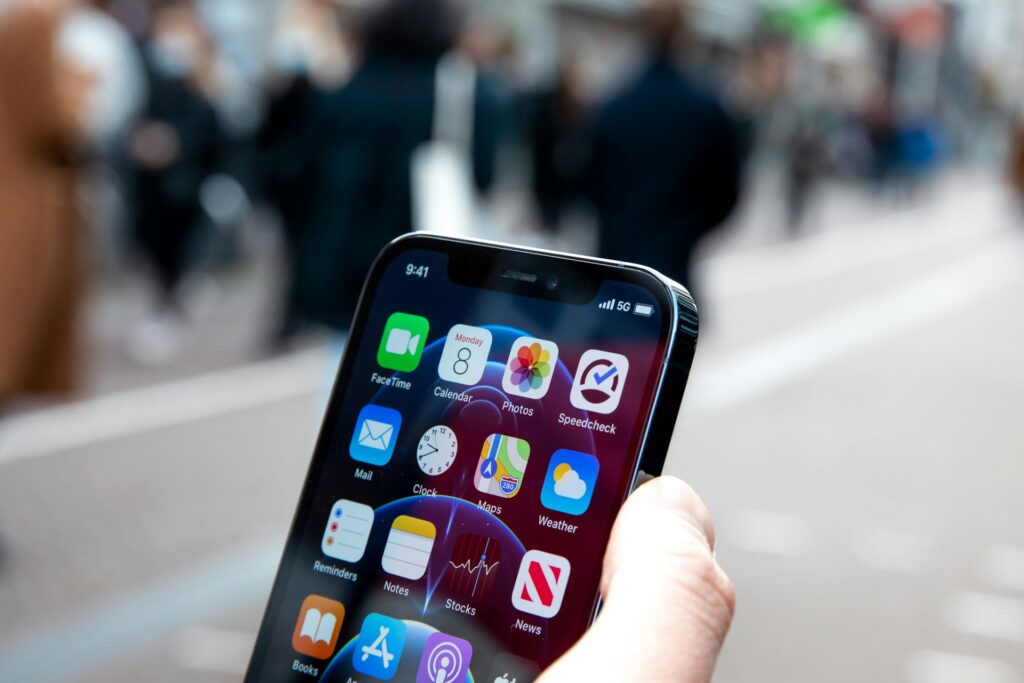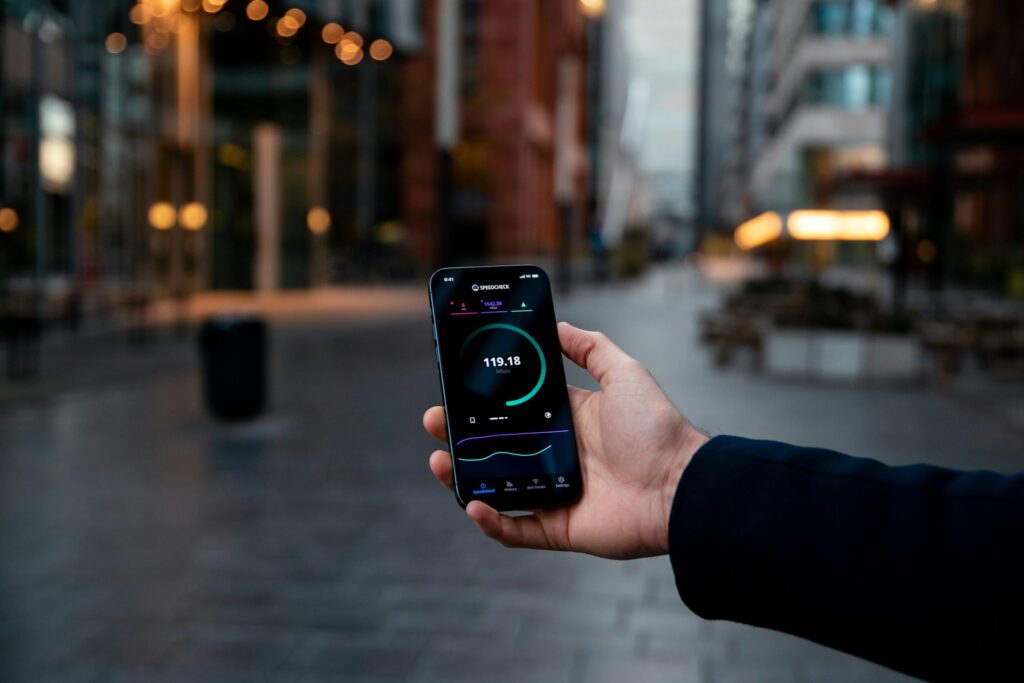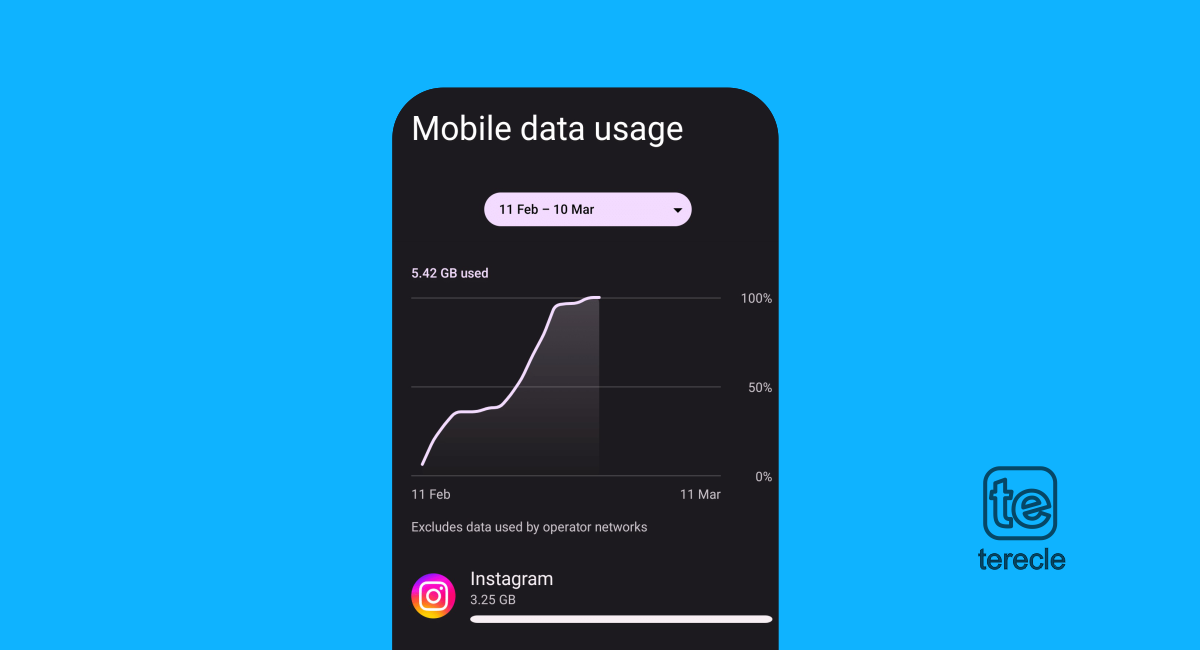- Mobile data is now a vital necessity for businesses, individuals, and social platforms.
- The financial impact of constant data usage can be significant, often surpassing expenses like meals
- Despite its necessity, excessive data spending may lead to a silent financial drain.
Mobile data necessity and usage cannot be overemphasized in this technology age. Looking back this wasn’t even a topic let alone a necessity. But change they say is the only constant thing. The fact that you are reading this right now is certainly made possible by your ability to have mobile data on your phone or laptop.
In this article, you will learn:
How can excessive mobile data usage be a silent financial drain?
In this technology age where mobile data is crucial, the cost of mobile data can silently drain finances. Setting and adhering to an achievable mobile data budget offers a way to lessen this financial impact.
Today, mobile data is as necessary as owning a phone itself if not more. All kinds of businesses have a branch on the internet making the demand for data very enormous. And of course, individuals are not left out in this quest. Practically, the amount of mobile data bought by individuals, if collected, could equate to that of huge companies.
An average individual spends at least $7 – $30 on mobile data monthly, and in twelve months you know how much that adds up to per person.
Many individuals go as far as skipping meals as long as they can afford mobile data for their phones. Some go to very ridiculous heights to have data to run so many individual needs as well as stay informed and up-to-date with local and worldwide events. Network providers make billions of naira on their part, struggling to provide the best value-added services to earn one new customer to their preferred network.
The economics of mobile data

- 1GB: With 1 GB of data, you may have access to 10 hours of internet browsing, social media use, and checking emails per month. Also, 10 hours of music streaming and about 1 or 2 hours of standard quality TV/film.
- 4GB: With 4 GB of data, you may have access to 40 hours of internet browsing, social media use, and checking emails per month, 40 hours of music streaming, and 4-6 hours of standard quality TV/film.
- 12GB: With 12GB data, you may have access to 120 hours of internet browsing, social media use, and checking emails per month, 120 hours of music streaming, and 16-20 hours of standard quality TV/film.
- 30GB: With 30GB data, you may have access to 300 hours of internet browsing, social media use, and checking emails per month, 300 hours of music streaming, 50+ hours of standard quality TV/film, and 10+ hours of high definition TV/film per month.
The impact of data caps
A data cap otherwise called (bandwidth cap) is a service provider-imposed limit on the amount of data transferred by a user account for a specified fee, at a specified level over a given time. The term applies to both home Internet service and mobile data plans.
Data caps are like lines, usually imposed over a maximum allowed amount of data in a month for an agreed-upon charge. If this limit is exceeded by the user, they are charged at a higher rate for continuous data use.
While data caps have been a rival topic among consumers, ISPs insist that they are necessary to curb the small percentage of heavy users from overwhelming the network, hence ensuring a reliable and equal internet experience for all customers.
Mobile data consumption
Data consumption simply takes stock of how much data your phone uploads or downloads a file etc., using available mobile data. To ensure that you are not using too much data, you can monitor or change your data usage.
To monitor:
⦁ Go to your device’s Settings.
⦁ Select Network & Internet, then click on Data Usage.
⦁ You will see how much data your device has used in the last 30 days.
Average data usage trends
Statistics gathered in 2022, show that the average data used per smartphone, monthly, worldwide summed up to 15 gigabytes (GB).
This is forecasted to increase according to expert claims and will primarily be driven by a four times increase in smartphone data traffic in the period, with average data per active smartphone settling at 19 GB per month in 2028.
Apps and services that use more data

Social media apps, mobile gaming apps with games like Fortnite, PUBG, and Clash of Clans, Video streaming apps such as YouTube, Netflix, Amazon Prime Video, and Audio streaming apps like Spotify, Apple Music, and Pandora are all just a few examples of apps that use much data.
Ways to monitor data usage
- Set data usage alerts: Take advantage of data usage alerts offered by your service provider. By specifying your desired limit, you can receive notifications when nearing the threshold and avoid exceeding it
- Wi-Fi is a valuable resource for data usage optimization. Whenever available, connect your devices to a trusted Wi-Fi network.
- Optimize streaming settings: To optimize your data usage – adjust streaming quality to a lower resolution, and download videos only over Wi-Fi.
- Enable “Data Saver” mode: Which restricts background data usage for app refresh.
- Frequently update your apps and OS: Often this comes with optimizations that reduce data usage. By staying updated, you may take advantage of these changes and ensure efficient data utilization
Data-saving apps and techniques
- Opera Mini is an internet browser that shrinks the downloaded size of web pages by about 90% without reducing the quality of your browsing experience.
- Opera Max also compresses the amount of data that apps use.
- Data Compress is another app that saves data and works similarly to Opera Max it helps in reducing your data consumption on iOS devices.
The hidden costs of mobile data
- Data overage charges: Exceeding your monthly data limit may lead to high charges. Many users may need to monitor their data usage regularly to avoid overages.
- Overage charges: Overage fees refer directly to additional charges incurred when you exceed the allocated quota of a particular data subscription. For instance, if your mobile data plan includes a monthly data limit of 3GB, any usage above that, will be subject to overage fees.
- The price of convenience: Mobile data offers us enormous levels of convenience in this digital world, and since nothing is free. It comes with a price, more ideally referred to as the ‘price of convenience’.
Either as part of a cellular service or a pay-as-you-go plan, all of which cost money. Unless you have an unlimited data plan, the more you use, the more you pay. It makes sense to watch out for the amount of data you use if you aren’t on an unlimited plan.
Data throttling and its effects
The Impact of Throttling on Data Consumption causes an inevitable reduction of internet speeds and affects activities such as streaming high-definition videos or playing online games. Users may experience buffering issues and longer loading times
Data rollover policies
Data rollover data is as the name implies, a feature made available by mobile service providers that allows users to carry forward unused data from one billing cycle to the next.
This means that if you fail to use up all your data subscription in a month, it won’t expire rather it will be added to your data allowance in the following month.
Mitigating data expenditure
- Using Wi-Fi to Reduce Data Usage: One way to conserve data effectively is by turning off mobile data access. Once this is done, you’ll only be able to use data when you are connected to a Wi-Fi network. Also, to use less data, you should turn off auto-sync. When this is done, you’ll need to sync your apps manually.
- Optimizing App Settings: Optimizing app settings will save your mobile data, do this by, disabling push notifications for apps that are not in use to save mobile data, and restricting video autoplay on social media platforms to prevent unauthorized video downloads.
Data-saving tips and tricks:
- Limit background data
- Use Low Data Mode on your iPhone and activate Data Saver Mode on your Android devices
- Take Maps Offline
- Use your browser’s reading list
- Download, don’t stream
- Turn Off Wi-Fi Assist
- Disable Automatic Updates on Android
Global roaming costs
Determining the global roaming cost includes considering domestic wireless calls that are optimized pooled plan to be about 5 cents per minute and “unlimited” data plans provide data connectivity at a fixed cost of approximately $50 per month. While, international roaming usage charges for customers in the U.S. are typically around $1.50 per minute, 50 cents per SMS, and $5 to $10 per call
Data package customization
Since service providers are focused on monetizing their data traffic and developing new pricing options based on consumers.
Data package customization is practically tailored to soothe different income status levels of individuals, firms, etc. You can purchase as much or as little as possible depending on your finances and need of usage.
Impact of unlimited data plans
Unlimited data plans have the following advantages:
- Unrestricted usage: With an unlimited data plan, users are provided with unlimited data consumption for a month and can explore the internet, watch videos, and keep up with all the trends on social media platforms without any worries about data caps or overage charges.
- Improved productivity: When users opt for unlimited data plans, they tend to have greater productivity and meet their target more. This plan supports work on the go, access to important documents no matter the size, and collaboration efficiently from anywhere.
- Entertainment and streaming: Unlimited data is a perfect plan for avid streamers, gamers, and music enthusiasts who like to stay in sync with their favorite content without any buffering or interruptions.
- Cost efficiency: For bulk data users, getting an unlimited plan may be best and can save them from costly overage fees and the need to constantly subscribe for limited data bundles only to have them exhausted in no time.

Comparative analysis of mobile data costs worldwide
Countries have varying prices for one gigabyte (1GB) of mobile data but all seem to fall within similar units for most. Several countries offer very cheap mobile data, but predominantly in the remote island nations of Africa and South America data there is found to be very expensive.
Israeli, Italy, Fiji, and San Marino in that order comparatively, happen to offer some of the cheapest data globally.
According to a research paper by Cable, U.K., three-quarters of Israelis own a smartphone and boast of a higher smartphone market than the U.S. with multiple providers offering huge data allowances with a wide 4G LTE and 5G network coverage.
Also, about a dozen popular service providers in Italy collectively offer some of the world’s cheapest, and the 5G network is currently available to about 95% of the population, alongside its 4G.
The future of mobile data

According to Huawei, in 2030, the mobile Internet will be completely transformed, and the digital and physical worlds will be more intrinsically integrated creating near-real-life experiences.
Total mobile data traffic and demand is estimated to grow by a factor of 3 between 2023 and 2029.
Predictions for data consumption
Mobile data traffic is estimated:
- On a global scale, average mobile data usage per smartphone is figured to rise from 21 GB in 2023 to 56 GB in 2029.
- 5G’s mobile data traffic is forecast to grow to about 76 percent in 2029.
- Due to video and social networks, the anticipated average mobile data consumption will increase from approximately 15 GB/month in 2022 to 75-80 GB/month by 2030.
Evolving data pricing models
Over the years, mobile data pricing has shifted and it only gets higher, with these evolving and unstating data pricing modes and the advent of 5G technology.
The future of wireless data plans looks promising and may also come at a higher cost but of course, customers’ pricing models are expected to get more innovative and user-centric to cater to their individual needs.
While of course, offering 5G services that promise lightning-fast speeds, reduced latency, and increased capacity, opening up new possibilities for connectivity and innovative pricing models.
Before you go…
The cost of mobile data can be likened to a silent robber, sucking away funds without noticeable impact until it starts troubling your finance. So, be alert!!
Updated on April 25th, 2024: This article was originally published on January 16th, 2021.
FAQs
-
What are the hidden costs associated with mobile data usage?
Be aware of hidden costs such as activation fees, device fees, overage charges, and taxes. Regularly monitor your data usage to avoid unexpected expenses.
-
What are the common ways that mobile apps consume data without user awareness?
One of the most common data consumption culprits without user awareness is through background app refresh. This means that your applications use the internet in the background even when you are not using them.
-
Are there specific mobile settings that help control data usage?
Yes. They include; Setting data usage alerts, Enabling “data” savers on your device, and Downloading data-saving apps.
-
How does unlimited data differ from a capped data plan in terms of cost?
Uncapped plans tend to cost more than capped plans, and ultimately individual needs and usage patterns.


